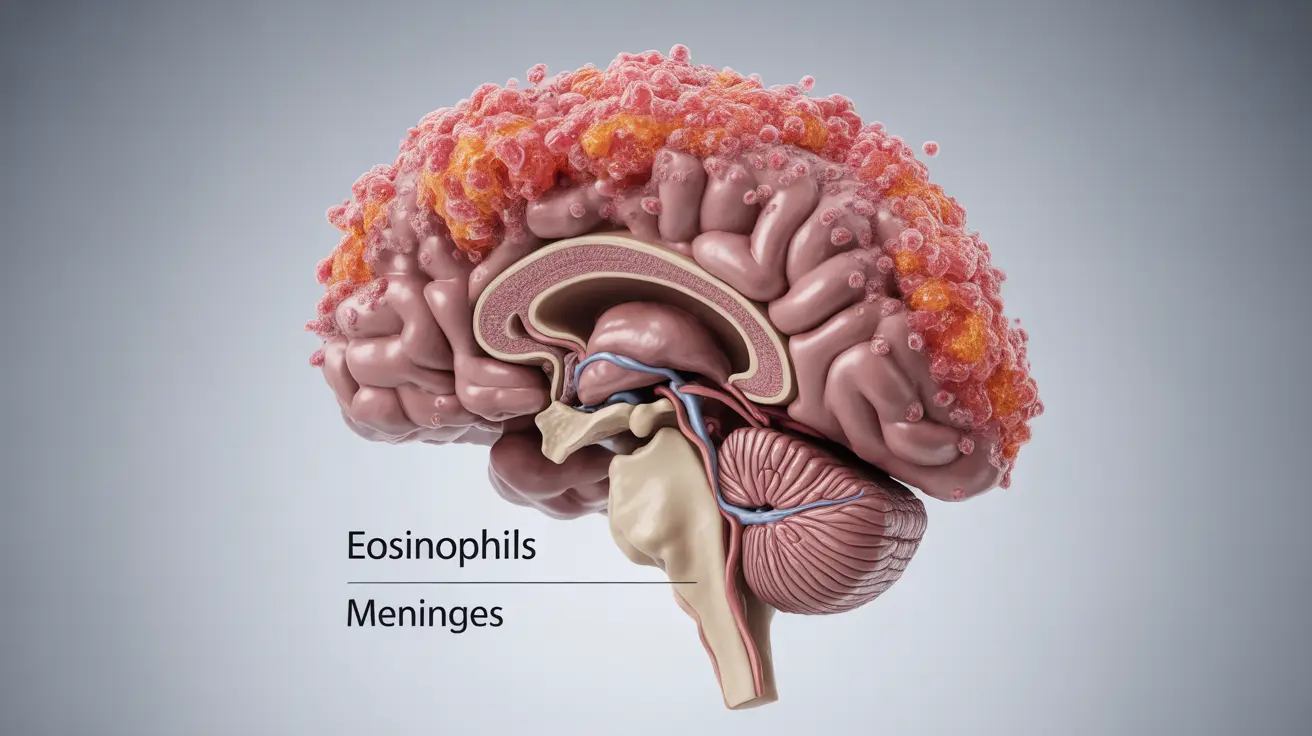Eosinophilic meningitis is a rare but serious inflammatory condition affecting the membranes that protect the brain and spinal cord. This distinct form of meningitis occurs when specific white blood cells, called eosinophils, accumulate in the cerebrospinal fluid and cause inflammation. Understanding its symptoms, treatment options, and prevention methods is crucial for anyone living in or traveling to areas where this condition is more common.
What Causes Eosinophilic Meningitis?
The most common cause of eosinophilic meningitis is infection by the parasitic roundworm Angiostrongylus cantonensis, also known as the rat lungworm. This parasite typically completes its life cycle between rats and snails or slugs. Humans become accidental hosts when they consume raw or undercooked infected intermediate hosts or contaminated produce.
Common Symptoms and Disease Progression
The symptoms of eosinophilic meningitis typically develop within 2-35 days after exposure to the parasite. Initial symptoms often include:
- Severe headache
- Neck stiffness
- Sensitivity to light
- Nausea and vomiting
- Tingling or painful sensations in the skin
- Fever
- Muscle weakness
As the condition progresses, some patients may experience more severe neurological symptoms, including:
- Paralysis
- Visual disturbances
- Cognitive changes
- Balance problems
Diagnosis and Treatment Approaches
Diagnosis typically involves analyzing cerebrospinal fluid through a lumbar puncture, which reveals elevated levels of eosinophils. Blood tests may also show increased eosinophil counts, helping confirm the diagnosis.
Treatment Strategies
Treatment for eosinophilic meningitis generally focuses on managing symptoms and supporting the body's natural healing process. Key treatment approaches include:
- Pain management medications
- Corticosteroids to reduce inflammation
- Anti-parasitic medications like albendazole in some cases
- Supportive care to maintain comfort and prevent complications
- Regular monitoring of neurological symptoms
Prevention and Risk Reduction
Preventing eosinophilic meningitis primarily involves food safety practices and awareness, especially in endemic areas. Key prevention strategies include:
- Thoroughly washing all fruits and vegetables
- Avoiding consumption of raw or undercooked snails, slugs, or freshwater prawns
- Storing produce properly to prevent contamination by snails or slugs
- Being cautious with fresh produce when traveling in endemic regions
Frequently Asked Questions
What are the most common symptoms of eosinophilic meningitis and how does it progress?
The most common symptoms include severe headache, neck stiffness, and sensitivity to light, typically appearing within 2-35 days after exposure. The condition usually progresses from mild symptoms to more severe neurological manifestations, potentially including muscle weakness, tingling sensations, and in some cases, temporary paralysis.
How is eosinophilic meningitis treated, and what are the common management strategies?
Treatment primarily focuses on symptom management through pain relief medications, corticosteroids to reduce inflammation, and supportive care. Some cases may require anti-parasitic medications like albendazole, though this approach varies by case severity and medical guidance.
Can eating raw vegetables increase the risk of developing eosinophilic meningitis, and why?
Yes, consuming raw vegetables can increase risk if they're contaminated with infected snails or slugs or their slime trails. This risk is particularly relevant in endemic areas where the rat lungworm parasite is common. Thorough washing and proper food handling significantly reduce this risk.
What are the benefits and risks of using albendazole for treating eosinophilic meningitis?
Albendazole can help eliminate the parasitic infection causing eosinophilic meningitis. However, its use must be carefully considered as it may temporarily increase inflammation as parasites die off. Benefits include potentially shorter illness duration, while risks include possible temporary symptom worsening.
How can I prevent eosinophilic meningitis, especially when traveling to endemic areas?
Prevention involves careful food handling practices, including thoroughly washing all produce, avoiding raw or undercooked snails and slugs, and being cautious with fresh vegetables in endemic areas. When traveling, stick to properly cooked foods and carefully cleaned produce from reliable sources.




